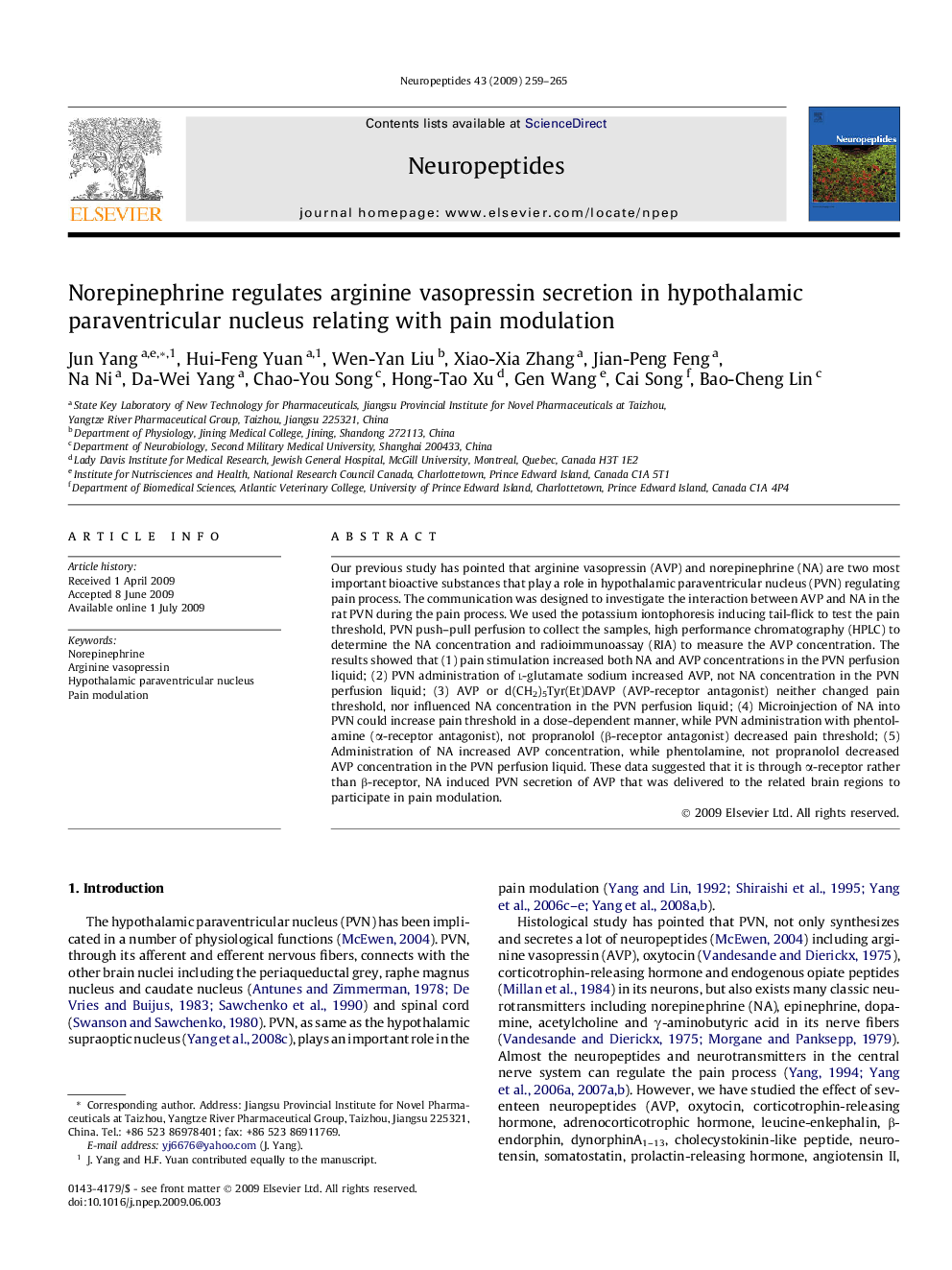| Article ID | Journal | Published Year | Pages | File Type |
|---|---|---|---|---|
| 2808503 | Neuropeptides | 2009 | 7 Pages |
Our previous study has pointed that arginine vasopressin (AVP) and norepinephrine (NA) are two most important bioactive substances that play a role in hypothalamic paraventricular nucleus (PVN) regulating pain process. The communication was designed to investigate the interaction between AVP and NA in the rat PVN during the pain process. We used the potassium iontophoresis inducing tail-flick to test the pain threshold, PVN push–pull perfusion to collect the samples, high performance chromatography (HPLC) to determine the NA concentration and radioimmunoassay (RIA) to measure the AVP concentration. The results showed that (1) pain stimulation increased both NA and AVP concentrations in the PVN perfusion liquid; (2) PVN administration of l-glutamate sodium increased AVP, not NA concentration in the PVN perfusion liquid; (3) AVP or d(CH2)5Tyr(Et)DAVP (AVP-receptor antagonist) neither changed pain threshold, nor influenced NA concentration in the PVN perfusion liquid; (4) Microinjection of NA into PVN could increase pain threshold in a dose-dependent manner, while PVN administration with phentolamine (α-receptor antagonist), not propranolol (β-receptor antagonist) decreased pain threshold; (5) Administration of NA increased AVP concentration, while phentolamine, not propranolol decreased AVP concentration in the PVN perfusion liquid. These data suggested that it is through α-receptor rather than β-receptor, NA induced PVN secretion of AVP that was delivered to the related brain regions to participate in pain modulation.
